分子别名(Synonym)
RP1-261G23.1,MGC70609,MVCD1,VEGFA,VPF
表达区间及表达系统(Source)
Biotinylated Human VEGF165, His,Avitag (VE5-H82Q0) is expressed from human 293 cells (HEK293). It contains AA Ala 27 - Arg 191 (Accession # P15692-4).
Predicted N-terminus: His
Request for sequence
蛋白结构(Molecular Characterization)

This protein carries a polyhistidine tag at the N-terminus, followed by an Avi tag (Avitag™).
The protein has a calculated MW of 22.4 kDa (monomer). The protein migrates as 25-33 kDa (monomer) under reducing (R) condition, and 42-55 kDa (homodimer) under non-reducing (NR) condition (SDS-PAGE) due to glycosylation.
标记(Labeling)
Biotinylation of this product is performed using Avitag™ technology. Briefly, the single lysine residue in the Avitag is enzymatically labeled with biotin.
蛋白标记度(Protein Ratio)
Passed as determined by the HABA assay / binding ELISA.
内毒素(Endotoxin)
Less than 1.0 EU per μg by the LAL method.
纯度(Purity)
>95% as determined by SDS-PAGE.
制剂(Formulation)
Lyophilized from 0.22 μm filtered solution in PBS, pH7.4 with trehalose as protectant.
Contact us for customized product form or formulation.
重构方法(Reconstitution)
Please see Certificate of Analysis for specific instructions.
For best performance, we strongly recommend you to follow the reconstitution protocol provided in the CoA.
存储(Storage)
For long term storage, the product should be stored at lyophilized state at -20°C or lower.
Please avoid repeated freeze-thaw cycles.
This product is stable after storage at:
- -20°C to -70°C for 12 months in lyophilized state;
- -70°C for 12 months under sterile conditions after reconstitution.
电泳(SDS-PAGE)
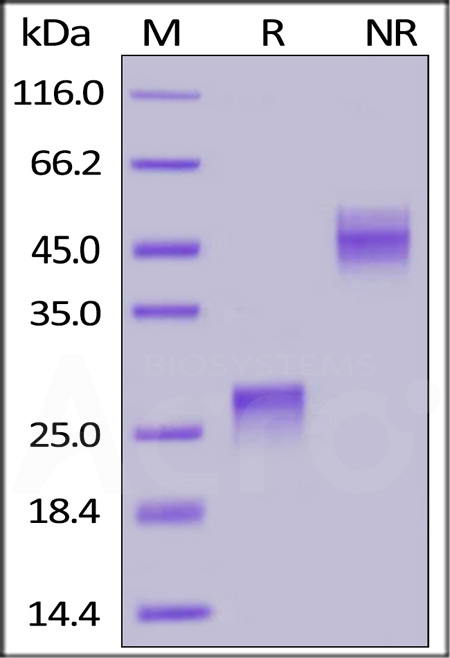
Biotinylated Human VEGF165, His,Avitag on SDS-PAGE under reducing (R) and non-reducing (NR) conditions. The gel was stained with Coomassie Blue. The purity of the protein is greater than 95%.
活性(Bioactivity)-ELISA

Immobilized Human VEGF R2, His Tag (Cat. No. KDR-H5227) at 2 μg/mL (100 μL/well) can bind Biotinylated Human VEGF165, His,Avitag (Cat. No. VE5-H82Q0) with a linear range of 2-39 ng/mL (QC tested).
Protocol
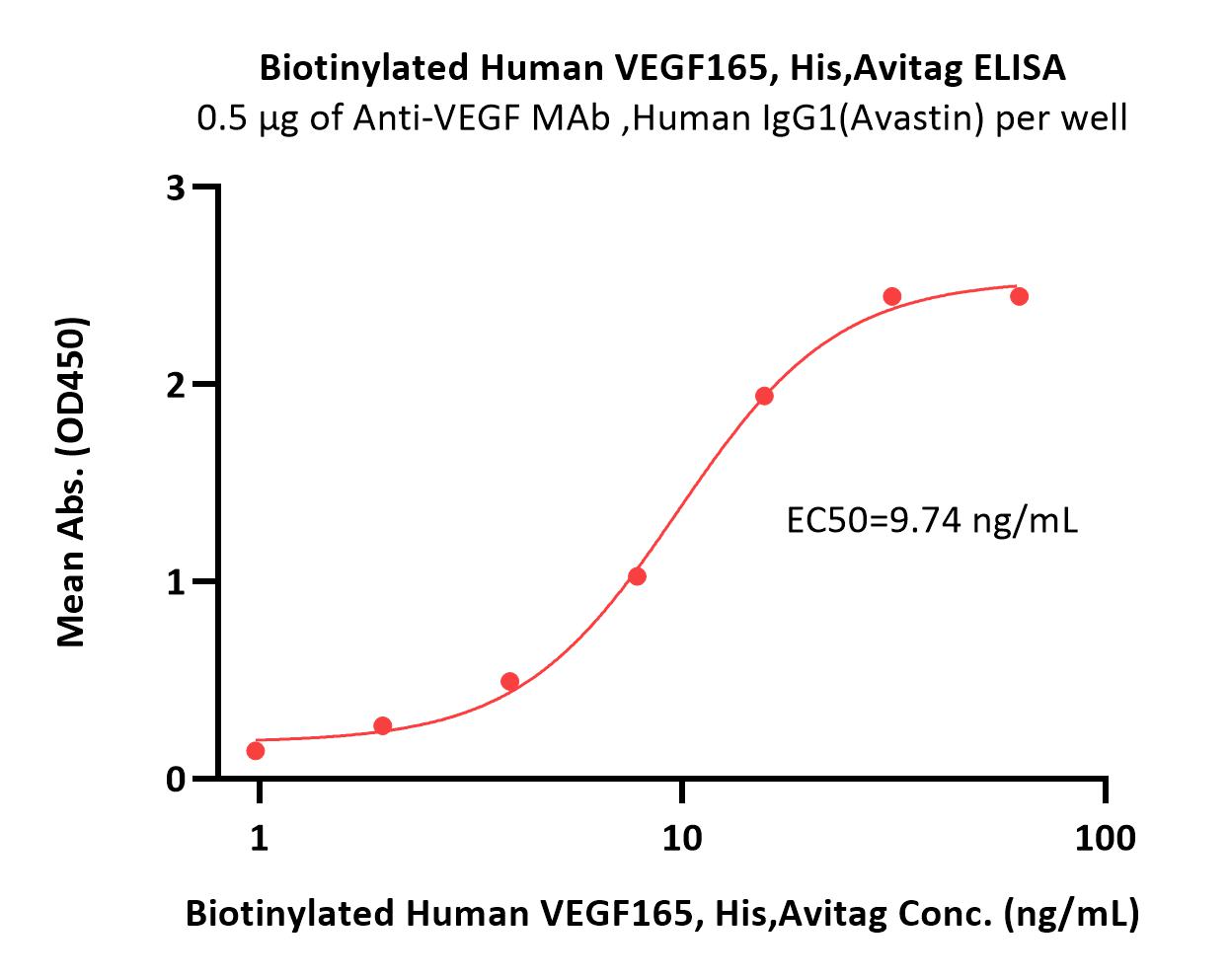
Immobilized Anti-VEGF MAb, Human IgG1 (Avastin) at 5 μg/mL (100 μL/well) can bind Biotinylated Human VEGF165, His,Avitag (Cat. No. VE5-H82Q0) with a linear range of 1-15.6 ng/mL (Routinely tested).
Protocol
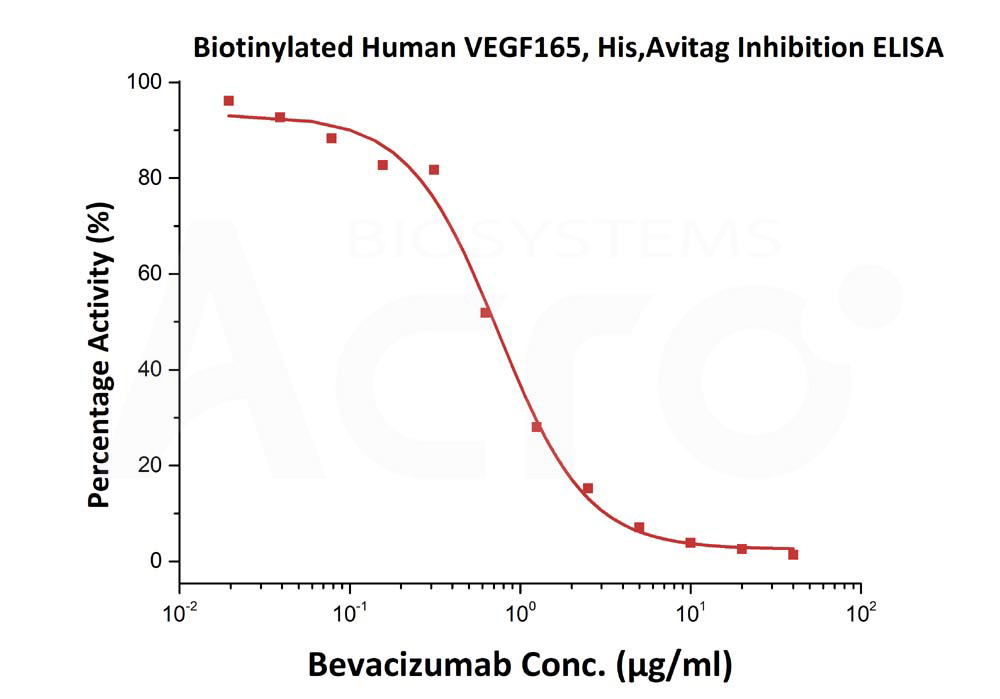
Immobilized Human VEGF R2, His Tag (Cat. No. KDR-H5227) at 2 μg/mL (100 μL/well), can bind pre-mixed increasing concentrations of Bevacizumab and 0.05 μg/mL (100 μL/well) Biotinylated Human VEGF165, His,Avitag (Cat. No. VE5-H82Q0) with a half maximal inhibitory concentration (IC50) of 0.74 μg/mL (Routinely tested).
Protocol
活性(Bioactivity)-SPR
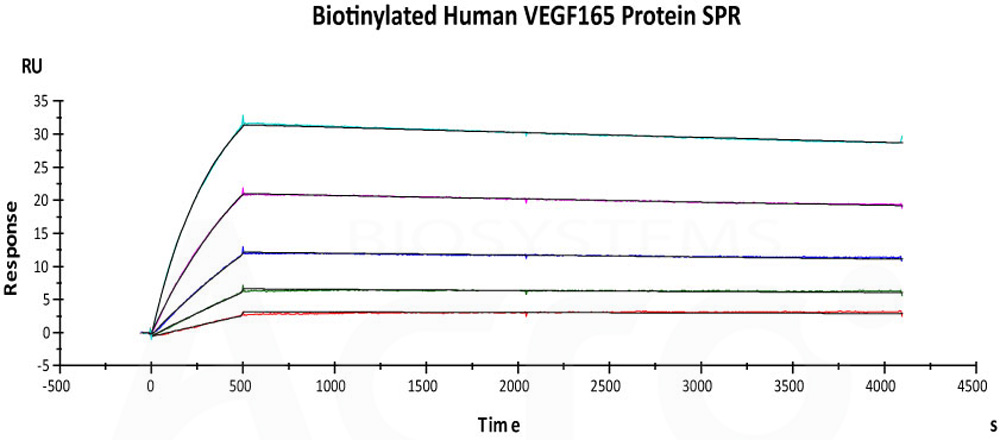
Immobilized Biotinylated Human VEGF165, His,Avitag (Cat. No. VE5-H82Q0) on CM5 Chip via Streptavidin, can bind Avastin with an affinity constant of 0.417 nM as determined in SPR assay (Biacore T200) (Routinely tested).
Protocol
活性(Bioactivity)-BLI
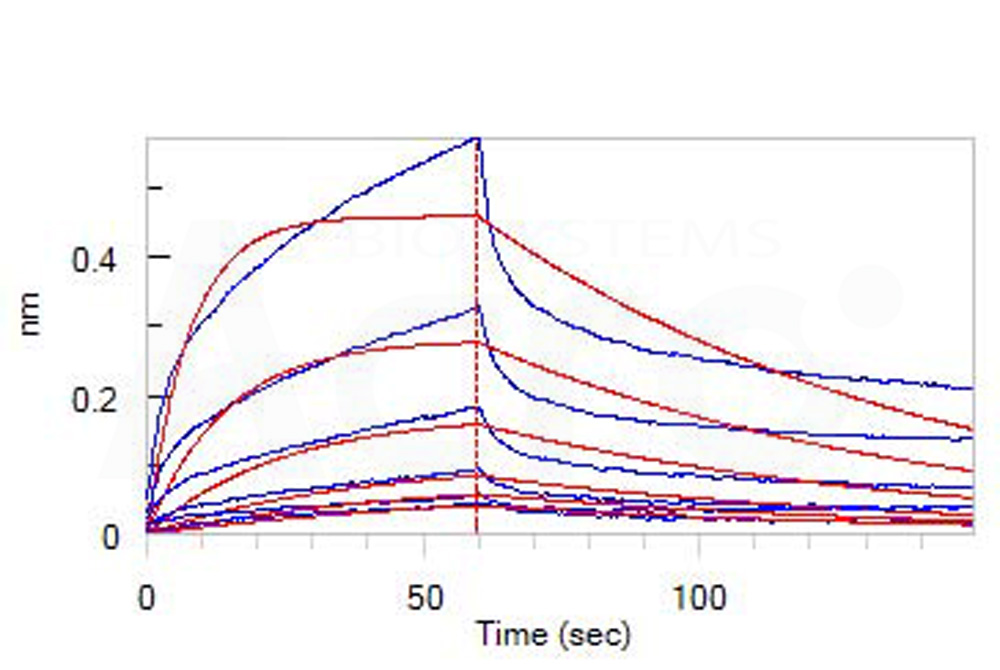
Loaded Biotinylated Human VEGF165, His,Avitag (Cat. No. VE5-H82Q0) on SA Biosensor, can bind Human Neuropilin-1, His Tag (Cat. No. NR1-H5228) with an affinity constant of 21.1 nM as determined in BLI assay (ForteBio Octet Red96e) (Routinely tested).
Protocol
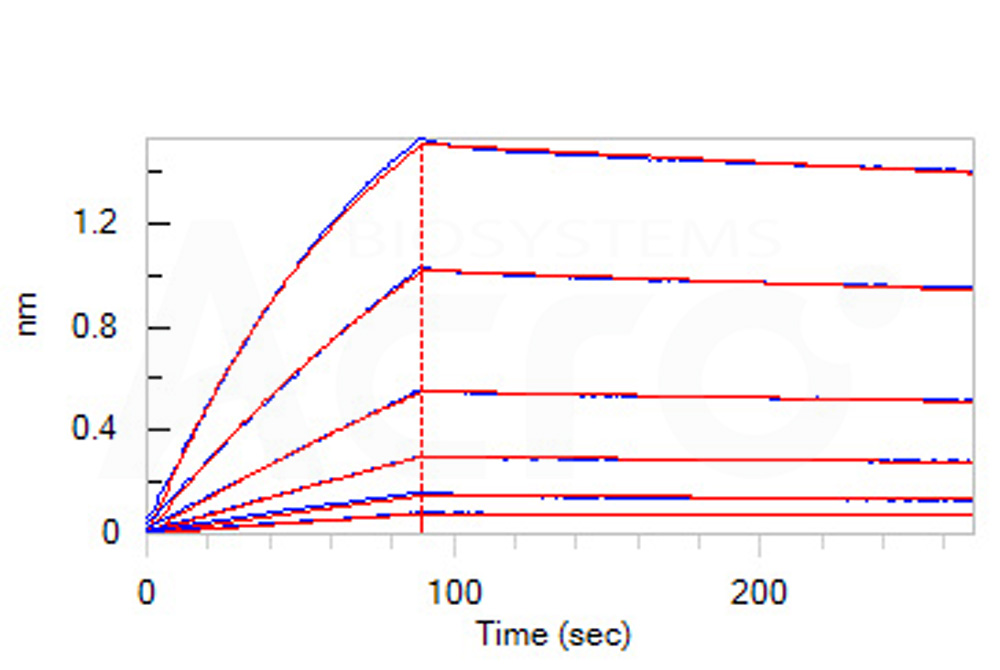
Loaded Biotinylated Human VEGF165, His,Avitag (Cat. No. VE5-H82Q0) on SA Biosensor, can bind Human VEGF R1, His Tag with an affinity constant of 3.36 nM as determined in BLI assay (ForteBio Octet Red96e) (Routinely tested).
Protocol
背景(Background)
VEGF165 is the most abundant splice variant of VEGF-A. VEGF165 is produced by a number of cells including endothelial cells, macrophages and T cells. VEGF165 is involved in angiogenesis, vascular endothelial cell survival, growth, migration and vascular permeability. VEGF gene expression is induced by hypoxia, inflammatory cytokines and oncogenes. VEGF165 binds to heparan sulfate and is retained on the cell surface and in the extracellular matrix. VEGF165 binds to the receptor tyrosine kinases, VEGFR1 and VEGFR2. VEGF165 is the only splice variant that binds to co-receptors NRP-1 and NRP-2 that function to enhance VEGFR2 signaling. Binding of VEGF165 to VEGFR1 and VEGFR2 leads to activation of the PI3K/AKT, p38 MAPK, FAK and paxillin. VEGF plays a key role in tumor angiogenesis in many cancers.























































 膜杰作
膜杰作 Star Staining
Star Staining











